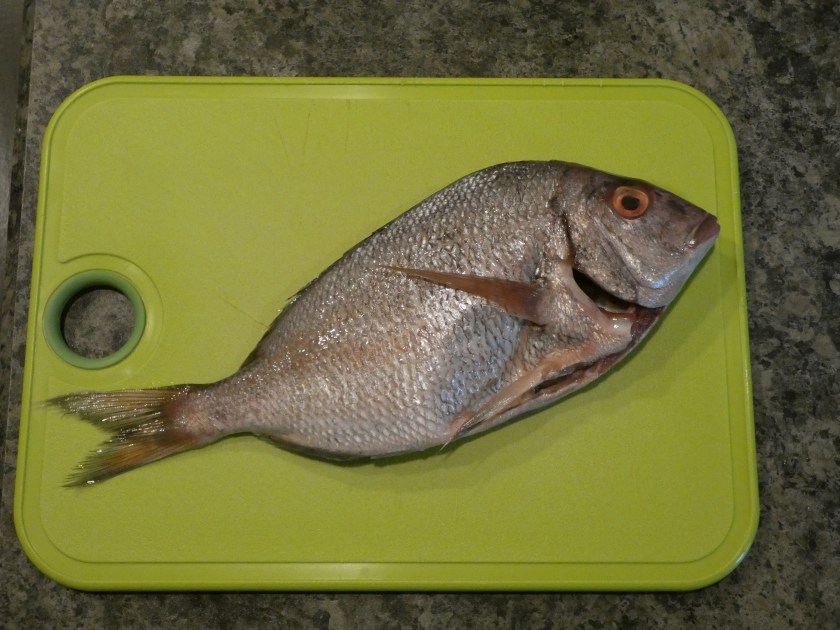The other day, I hopped on my bike, headed to the canal trail, and pedaled into town to visit New Hope Seafood Market. A successful score and ride home later, and Porgy was on the menu! There are definitely some pros and cons to working with whole fish, but in all, it’s worth it. Let’s start with the cons:
- It can be intimidating to see a fish head on your plate
- There can be some bone minefields to watch out for.
Now to the pros!
- When you purchase whole fish, you’ll know that it’s fresh at a glance by looking at the eyes. If they are dark and clear, the fish is fresh. If they are cloudy, it’s not as fresh. If you’re buying fillets, you have to take a leap of faith.
- Plating a whole fish can make your plate look rather exotic
- There are ways to get around the bones while eating…Just carefully flake the meat away with a fork until you’ve gotten it all up off the top side. Then, pull up the spine by the tail and the the bone column atop the fish, and you can proceed to eat the bottom fillet. Kitchen sheers can also help remove some rib bones from near the belly before cooking.
We served our Porgy with a field greens side salad and Roasted Baby Potatoes.

Time: 25 Minutes
Ingredients:
- Porgy (cleaned and scaled)
- Chives
- Fresh Garlic (although garlic powder will do in a pinch)
- Salt
Method:
- Preheat your oven to 350 degrees F, line a baking sheet with some foil, and give it a quick oil spray.
- Rinse your fish, and work a paring knife across the skin from tail to head to remove any straggler scales that might have clung tightly during the original scaling.
- Pat your fish dry, and use kitchen sheers to remove the side fins and the bones on the belly flap where the bottom fin would be.
- Give your fish a quick salt sprinkle on both sides.
- Score the top of your fish with a sharp knife.
- Transfer the fish to your baking sheet.
- Top the porgy with pressed or microplane grated fresh garlic and diced chives.
- Bake for 12-15 minutes. Then, do a quick test with a fork to see if the meat easily flakes. (If you look closely at our main picture and the cooked fish picture on the baking sheet, you’ll see some fork punctures where we tested).
- Plate, Carefully and Slowly Devour (that whole bone thing, you know), and Enjoy!




And lastly, while eating, you’ll see this, which makes it easy to remove the two columns of bones:


I had to look it up – it is a kind of sea bream, which in most romanic countries is called dorade(fr), or orata(it) or dor de amor(pt). Even here in Germany it is a Dorade. It is one of my favorite fishes. The bone structure gave it away. And yes, there are lots of small bones – but once you have overcome them, the fish is delightful 🙂